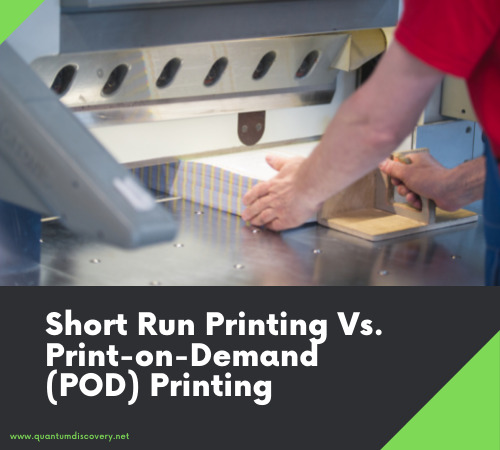Print-on-demand (POD) has grown in popularity over the last several years since it enables self-published authors and indie publishers to print books on a need-to-know basis. Despite POD’s popularity, short-run printing is often more cost-efficient, especially for modest quantities of books.
Short Run Printing: Definition
Short Run Printing is the custom order of a few books, but the concept of what makes a small batch varies significantly. Typically, a batch will include at least 50 books but may contain hundreds, if not tens of thousands.
Each short run is fully customizable and therefore incurs bulk expenses during the run’s initial setup. With each copy produced, the unit cost of the books in the run drops.
Short Run Printing: Advantage
On the other hand, the main benefit of short-run printing is that the unit cost per book decreases with each copy produced. This because the bulk of the cost of a print run is within the initial setup cost.
This is why short-run printing isn’t the most cost-efficient method for printing a single or two book copies. Still, it is unquestionably beneficial for larger quantities. Again, the number of copies required to break even in a short run depends on the book’s characteristics but is often about 50 or more.
Short Run Printing and Print-on-Demand (POD): Difference
Print-on-demand (POD) is precisely what it sounds like: authors, writers, or publishers order specifically the number of books they need when they require them. While this may mean that books are produced only when a client purchases, they can also be used to print small quantities of books for special occasions (e.g., book signing).
As a result, the actual number of copies produced for print-on-demand (POD) is often fewer than ten (10), but the total may be more, especially if you buy several print-on-demand (POD) batches over time. However, if a POD exceeds 50 or more (either in a single batch or overtime), this technique loses its cost-efficiency.
Print-on-Demand (POD): Drawbacks
The book’s unit price in print-on-demand (POD) never decreases. The precise point at which short-run printing becomes more cost-efficient depends on several variables. Including the book’s size, whether it is printed in monochrome or colored, the anticipated number of reorders, and the binding technique (paperback or hardcover). It is worth noting that certain POD printers provide discounts for specific quantity orders. The next drawback is the absence of customized choices for POD books.
Are you looking for a literary agent? Handing your book to publishers is a daunting task. However, companies like Quantum Discovery can help you with your needs regarding having your book delivered to the right publisher. Contact our professionals by calling (888) 755-6875or visit quantumdiscovery.net to know more.
